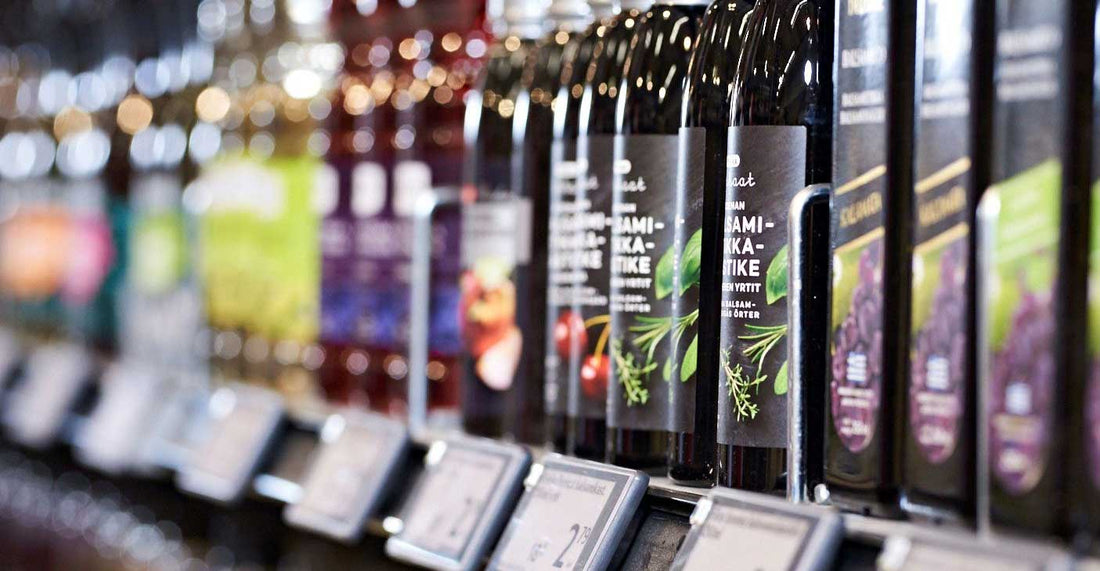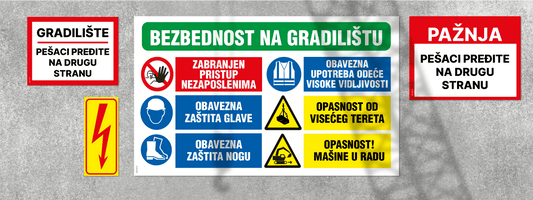
All about labelling, labels and stickers
Share
The right label can make the difference between the success or failure of your product. Creating the perfect product label requires a combination of creativity, curiosity and planning.
Labels occupy an important place as simple decoration, personalization of gifts, labels for products made to order and, of course, for identification of commercial products . However, before starting your project, it is important to consider all the details to avoid mistakes. By understanding the process of creating stylish and eye-catching labels, you can create designs that grab consumers' attention, communicate with customers and provide them with key information.
Who, what, to whom and why?
Labels are a key part of packaging that makes the product presentable and attractive. They contain written information on the container or package, including vital elements such as brand colors, company logos, different materials and notable shape.
Labels have a role that goes far beyond the boundaries of marketing. Certain details on the label must meet legal requirements. Regardless of whether a product is new to the market or already well established, it must comply with legal labeling regulations.
For almost every product, there are different levels of obligations that dictate what information companies must provide to consumers. For example, food and cosmetic products are subject to regulation by relevant ministries and their inspection bodies.
Plan for success with functionality first
Whether you're creating a custom label for yourself or a client, you need to develop a design that's functional and takes all product variables into account. Therefore, the initial process for creating a label is information gathering, not creativity.
If you are developing a tag for someone else, you will need information from the client. In some cases, the client will already have a logo that you can use to start the process and in other cases, you have to start from scratch (which should be included in the final price of the label). You also need to consider where the customer plans to sell the product. Using this information, you can develop ways to differentiate your offering.
If the client intends to sell their goods in a supermarket, for example, you need to develop a label that will distinguish them from all other similar products in the same section. If the client, however, will be selling their good exclusively online, you will need to come up with a different strategy.
During this stage, it helps to think about who will use the product. You also need to gather this information from the customer, because while the product may give some clues as to who will use it, only the owner knows exactly how he plans to promote his merchandise.

Looking at the bigger picture
In relation to a specific product, you will want to know certain details, such as the values of the ideal consumer, as well as their level of education. Experts describe it as: demographics + psychographics. Before starting the label design, it is important to "case by case" the information:
Who, What, When, Where, Why and How
Knowing that a product is for male teenagers, for example, is not enough insight to create the best design. You also need to ask yourself what other types of similar goods your ideal consumers buy. This type of detailed information is needed to design a label that speaks to the right audience.
After gathering the basic information, you will need to conduct research. You need to further research your target audience by identifying their age, gender, income and other information that you may have overlooked during the initial round of research to make sure you haven't missed any important details. These seemingly innocuous facts will inform you during the design process.
You should also learn as much as you can about competing products. You don't want to create a label that looks too much like a competitor's. Furthermore, this research will give you an idea of what kind of label design attracts the audience for that product.
Passing the message
Label design is more than creating an attractive project. You must also provide information that is important to consumers.
Of course, there are certain elements that will take up the most space on your label. This may include the product name and company slogan, as well as the company logo. For the rest of the information, however, you have to figure out how to fit it into the remaining space on the label.
One of the additional pieces of information that is important to highlight is the Unique Selling Proposition (USP). In fact, USP should take into account all stages of the design process. The purpose of a label is to first attract and then engage consumers. The way to fully achieve this is to prominently include the USP in key positions within the sticker.
If you're doing label development for a client and they haven't yet developed a unique selling proposition, you can work with them to uncover product benefits and promote these concepts on the label. By knowing the USP or benefits of the product, you can make appropriate design decisions during the planning phase of label creation.

Now the fun part - the design
Choosing the right color is one of the most important parts of designing your new label. The color you choose can be influenced by several variables, including the type of product, the target audience, and the colors used by competing goods.
Packaging often greatly influences label design. If the label contains a lot of "colorful" images, you'll want to use bright colors to complete the theme. More importantly, you want the color of the label to help set the product apart from competing goods.
Label typography encompasses the physical characteristics of the label as a whole because most labels contain a significant amount of text. Label typography outlines which items are highlighted to consumers, where items are placed, and which items are more important than others.
Begin this part of the planning process by coming up with typography for the most important design elements, such as the product name and tagline. Additionally, text design optimization is essential for labels, as space is extremely limited. This makes a definitive and concise version of the label extremely important.
You also need to decide what visual elements to use for your label, including images and illustrations. They are especially useful for attaching emotions to a product that words alone cannot produce. The product will definitely have a big impact on the visual elements you choose. If the label is for a mountain bike, your design can include an image of the bike.
Know your limitations
Now that you've figured out what you can do, it's time to figure out what you can't do. While you may know exactly what you want and have great ideas for label design, your concept may not serve your client's needs.
Will the product be used outdoors or in a wet environment? A paper label will not be a good choice. Look for waterproof materials instead. Similarly, if you work with food products, consider using food-safe materials for your labeling.
The finish is the most important
When a great design idea pops into your head, it's tempting to immediately add it to your design. However, it is important to know not only if the label fits with the product, but also if it complements the shape of the package.
Furthermore, you will need to take a moment to think about how much of the product you will cover with your label. If, for example, the product packaging isn't particularly aesthetically appealing, you'll want to create a label that covers most of the container. Conversely, if the package has visually attractive attributes, you will want to leave the package exposed and reduce the size of the label.
Either way, the label and packaging must attract and engage consumers. These variables are essential to viewing your design from the consumer's perspective.
Get second and third opinions
There is one more important step to complete before you upload your design idea to the printer and wait with bated breath for your new labels to arrive. After creating your label, you should survey consumers to determine how they feel about your creation. You should design a questionnaire that will help you understand whether you have successfully created the right feeling for consumers with your label design.
As consumers answer questions, dig deeper. Ask them why they feel the way they do about certain aspects of the label. This is important to help you uncover the emotional reasoning behind their feelings.



